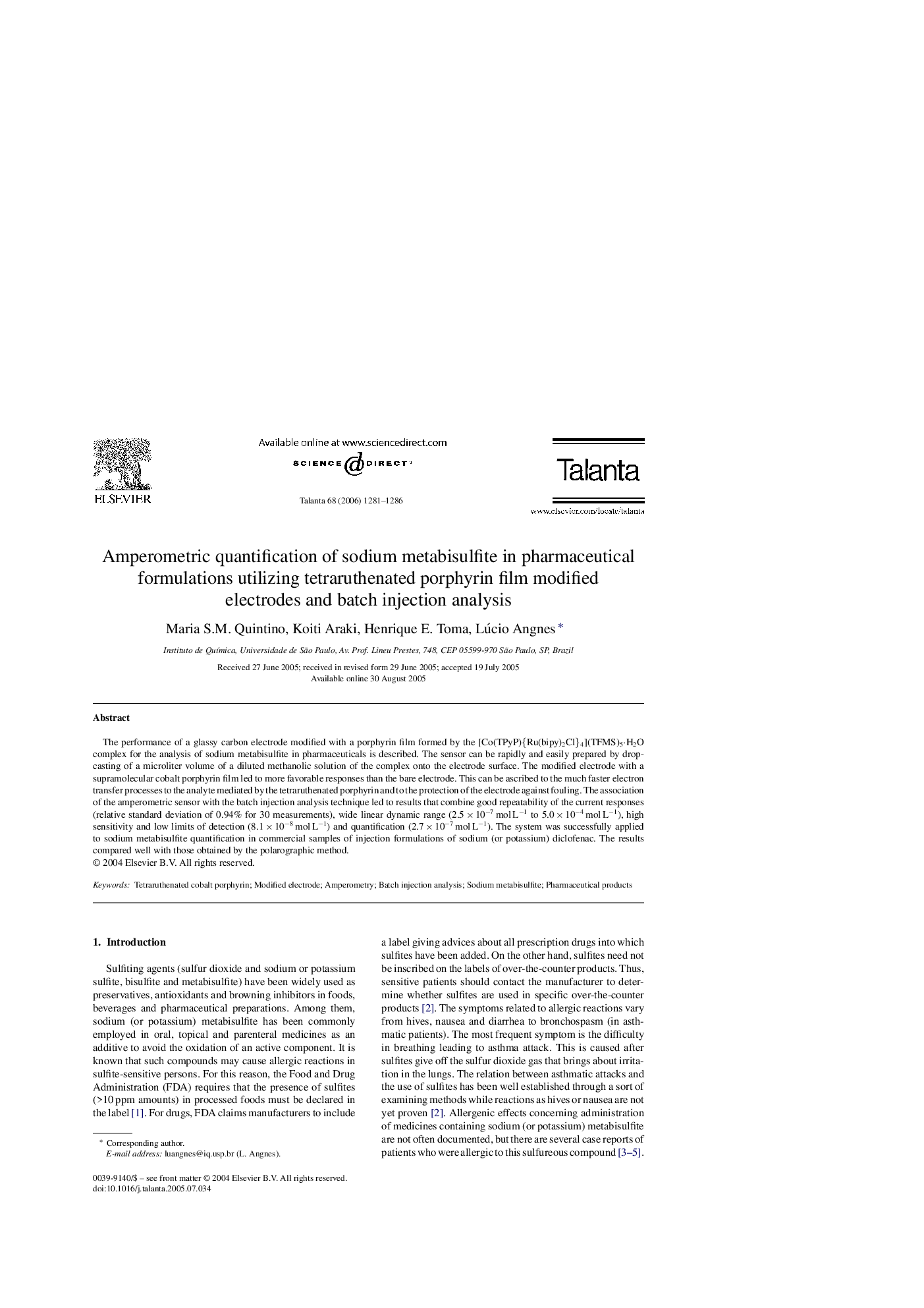| Article ID | Journal | Published Year | Pages | File Type |
|---|---|---|---|---|
| 1246417 | Talanta | 2006 | 6 Pages |
The performance of a glassy carbon electrode modified with a porphyrin film formed by the [Co(TPyP){Ru(bipy)2Cl}4](TFMS)5·H2O complex for the analysis of sodium metabisulfite in pharmaceuticals is described. The sensor can be rapidly and easily prepared by drop-casting of a microliter volume of a diluted methanolic solution of the complex onto the electrode surface. The modified electrode with a supramolecular cobalt porphyrin film led to more favorable responses than the bare electrode. This can be ascribed to the much faster electron transfer processes to the analyte mediated by the tetraruthenated porphyrin and to the protection of the electrode against fouling. The association of the amperometric sensor with the batch injection analysis technique led to results that combine good repeatability of the current responses (relative standard deviation of 0.94% for 30 measurements), wide linear dynamic range (2.5 × 10−7 mol L−1 to 5.0 × 10−4 mol L−1), high sensitivity and low limits of detection (8.1 × 10−8 mol L−1) and quantification (2.7 × 10−7 mol L−1). The system was successfully applied to sodium metabisulfite quantification in commercial samples of injection formulations of sodium (or potassium) diclofenac. The results compared well with those obtained by the polarographic method.
